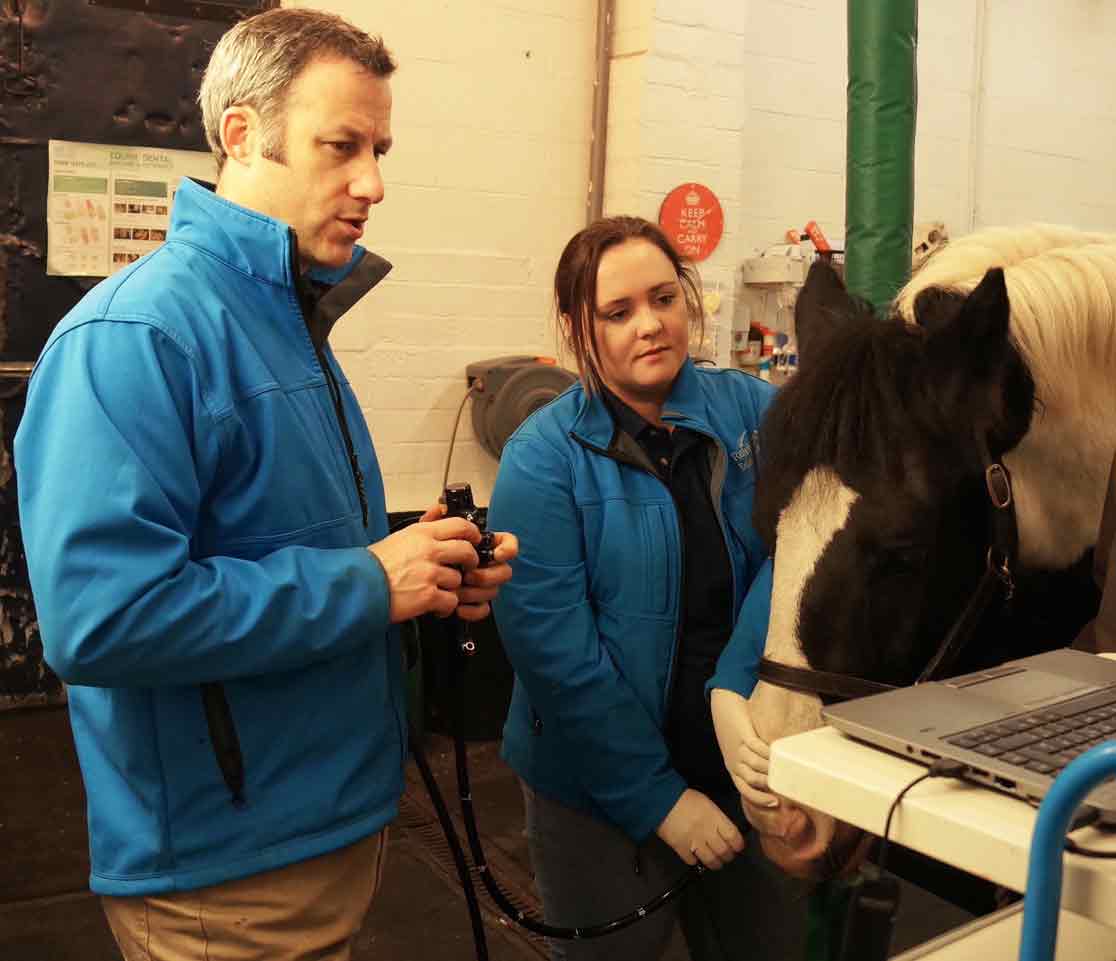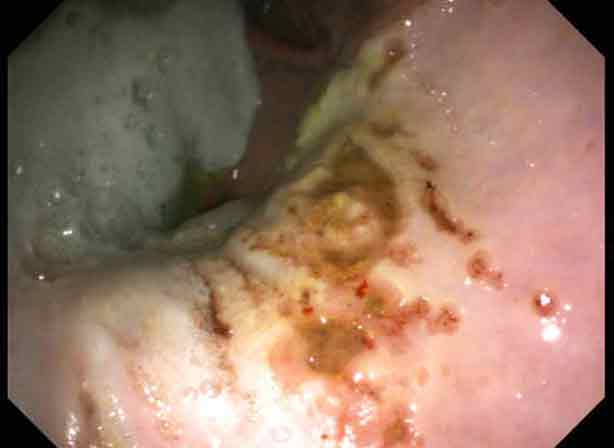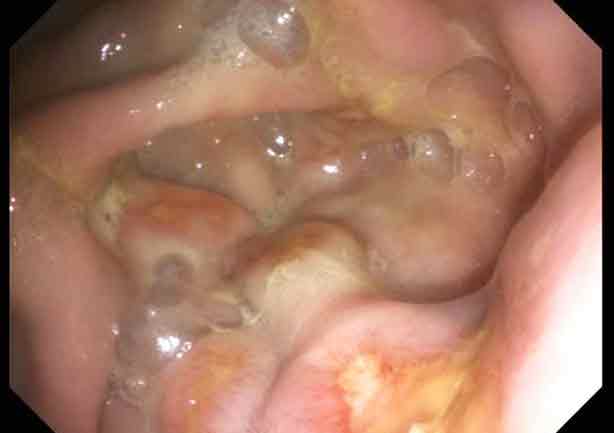12 Apr 2021
Equine gastric disease: updates in management

Image: © Alexia Khruscheva / Adobe Stock
Gastric disease is a highly prevalent condition in all equine breeds and equestrian disciplines, and its treatment has received considerable attention over the past two decades since gastroscopic examination became more widely available (Figure 1).
More recently, there has been a growing appreciation of the differences between diseases of the squamous and glandular portions of the stomach, with a realisation that treatment for glandular disease cannot simply be extrapolated from experience of managing squamous disease.
Following its registration in the UK in 2003, oral omeprazole has dominated the management of both squamous and glandular gastric disease, and it remains the only medicine registered for the management of squamous gastric disease. However, following trends in human medicine, other alternatives are being explored to improve treatment of squamous disease.
No products are registered for the management of equine glandular gastric disease. Omeprazole monotherapy is no longer considered effective for the treatment of glandular disease1,2 and recent clinical research has identified a number of unregistered alternatives that merit further investigation.

Equine squamous gastric disease

Equine glandular gastric disease
A range of treatments is used in the management of equine glandular gastric disease (EGGD; Figure 3), highlighting the absence of a universally effective treatment.

Conclusions
While huge knowledge gaps remain, the management of gastric disease has developed considerably in recent years as clinicians have embraced a number of new treatment options.
ESGD and EGGD are distinct conditions that are managed differently. Proton pump inhibitors remain the mainstay for ESGD, but new actives, enteric-coated formulations and parenteral administration may help to improve management of the condition.
Treatment of EGGD remains a challenge; the improved acid suppression that is achieved with LAIO appears to result in much higher rates of healing; however, cases exist that do not respond and other options such as misoprostol, sucralfate and glucocorticoids may all have a place. EGGD likely represents a syndrome, and until it is better understood there will be a degree of trial an error in managing the condition.
References
- Sykes BW, Hewetson M, Hepburn RJ, Luthersson N and Tamzali Y (2015). European College of Equine Internal Medicine consensus statement – equine gastric ulcer syndrome in adult horses, Journal of Veterinary Internal Medicine 29(5): 1,288 1,299.
- Rendle D, Bowen M, Brazil T, Conwell R, Hallowell G, Hepburn R, Hewetson M and Sykes B (2018). Recommendations for the management of equine glandular gastric disease, Uk-Vet Equine 2(Suppl 1): 2-11.
- Murray MJ, Haven ML, Eichorn ES, Zhang D, Eagleson J and Hickey GJ (1997). Effects of omeprazole on healing of naturally-occurring gastric ulcers in Thoroughbred racehorses, Equine Veterinary Journal 29(6): 425-429.
- Andrews FM, Sifferman RL, Bernard W, Hughes FE, Holste JE, Daurio CP, Alva R and Cox JL (1999). Efficacy of omeprazole paste in the treatment and prevention of gastric ulcers in horses, Equine Veterinary Journal Supplement 31(S29): 81-86.
- Doucet MY, Vrins AA, Dionne R, Alva R and Ericsson G (2003). Efficacy of a paste formulation of omeprazole for the treatment of naturally occurring gastric ulcers in training standardbred racehorses in Canada, The Canadian Veterinary Journal 44(7): 581-585.
- Lester GD, Smith RL and Robertson ID (2005). Effects of treatment with omeprazole or ranitidine on gastric squamous ulceration in racing Thoroughbreds, Journal of the American Veterinary Medical Association 227(10): 1,636-1,639.
- Sykes BW, Underwood C, Greer R, McGowan CM and Mills PC (2016). Pharmacokinetics and bioequivalence testing of five commercial formulations of omeprazole in the horse, Journal of Veterinary Pharmacology and Therapeutics 39(1): 78-83.
- Birkmann K, Junge HK, Maischberger E, Eser MW and Schwarzwald CC (2014). Efficacy of omeprazole powder paste or enteric-coated formulation in healing of gastric ulcers in horses, Journal of Veterinary Internal Medicine 28(3): 925-933.
- Sykes BW (2019). Courses for horses: rethinking the use of proton pump inhibitors in the treatment of equine gastric ulcer syndrome, Equine Veterinary Education 31(8): 441-446.
- Sykes BW, Underwood C, McGowan CM and Mills PC (2015). The effect of feeding on the pharmacokinetic variables of two commercially available formulations of omeprazole, Journal of Veterinary Pharmacology and Therapeutics 38(5): 500-503.
- Sykes BW, Underwood C, McGowan CM and Mills PC (2015). Pharmacokinetics of intravenous, plain oral and enteric-coated oral omeprazole in the horse, Journal of Veterinary Pharmacology and Therapeutics 38(2): 130-136.
- Andersson T, RÖhss K, Bredberg E and Hassan-Alin M (2001). Pharmacokinetics and pharmacodynamics of esomeprazole, the S-isomer of omeprazole, Alimentary Pharmacology and Therapeutics 15(10): 1,563-1,569.
- Lind T, Kylebäck A, Rydberg L, Jonsson A, Andersson T, Hasselgren G and Rohss K (2000). Esomeprazole provides improved acid control vs omeprazole in patients with symptoms of GERD, Gastroenterology 118(4): A18.
- Röhss K, Lundin C, Rydholm H and Nyman L (2000). Esomeprazole 40mg provides more effective acid control than omeprazole 40mg, American Journal of Gastroenterology 95(9): 2,432-2,433.
- Röhss K, Wildersmith C, Claarnilsson C, Lundin C and Hasselgren G (2001). Esomeprazole 40Mg provides more effective acid control than standard doses of all other proton pump inhibitors, Gastroenterology 120(5): A419.
- Sykes BW, Underwood C and Mills PC (2017). The effects of dose and diet on the pharmacodynamics of esomeprazole in the horse, Equine Veterinary Journal 49(5): 637-642.
- Huxford KE, Dart AJ, Perkins NR, Bell R and Jeffcott LB (2017). A pilot study comparing the effect of orally administered esomeprazole and omeprazole on gastric fluid pH in horses, New Zealand Veterinary Journal 65(6): 318-321.
- Rendle DI (2017). Oral esomeprazole as a treatment for equine gastric ulcer syndrome refractory to oral omeprazole, Equine Veterinary Journal 49(S51): 25-26.
- Mason LV, Moroney JR and Mason RJ (2019). Prophylactic therapy with omeprazole for prevention of equine gastric ulcer syndrome (EGUS) in horses in active training: a meta-analysis, Equine Veterinary Journal 51(1): 11-19.
- Sykes BW, Kathawala K, Song Y, Garg S, Page SW, Underwood C and Mills PC (2017). Preliminary investigations into a novel, long-acting, injectable, intramuscular formulation of omeprazole in the horse, Equine Veterinary Journal 49(6): 795-801.
- Gough S, Hallowell G and Rendle D (2020). A study investigating the treatment of equine squamous gastric disease with long-acting injectable or oral omeprazole, Veterinary Medicine and Science 6(2): 235-241.
- Rendle DI and Hallowell G (2021). Treatment of equine squamous gastric disease in elite endurance horses with oral and long-acting injectable omeprazole: a randomised, blinded clinical trial, in press.
- Gough S, Hallowell G and Rendle D (2021). Treatment of equine glandular gastric disease with long acting injectable and oral omeprazole, Veterinary Medicine and Science, in press.
- Rendle D and Hallowell G (2021). Treatment of equine glandular gastric disease in elite endurance horses with oral and long-acting injectable omeprazole: a randomised, blinded clinical trial, in press.
- Hepburn RJ and Proudman CJ (2014). Treatment of ulceration of the gastric glandular mucosa: retrospective evaluation of omeprazole and sucralfate combination therapy in 204 sport and leisure horses (abstract), Proceedings of the International Colic Symposium.
- Varley G, Bowen IM, Habershon-Butcher JL, Nicholls V and Hallowell GD (2019). Misoprostol is superior to combined omeprazole-sucralfate for the treatment of equine gastric glandular disease, Equine Veterinary Journal 51(5): 575-580.
- Kranenburg LC, Scheepbouwer JHT and Boom R van den (2020). Retrospective syudy of combined sucralfate and omeprazole therapy compared with omeprazole monotherapy for equine glandular disease, Proceedings of the European College of Equine Internal Medicine Congress, online.
- Pickles KJ, Black K, Brunt O and Crane M (2020). Retrospective study of misoprostol treatment of equine glandular gastric disease, Proceedings of the European College of Equine Internal Medicine Congress, Online.
- Sykes BW, Sykes KM and Hallowell GD (2014). Administration of trimethoprim-sulphadimidine does not improve healing of glandular gastric ulceration in horses receiving omeprazole: a randomised, blinded, clinical study, BMC Veterinary Research 10: 180.
